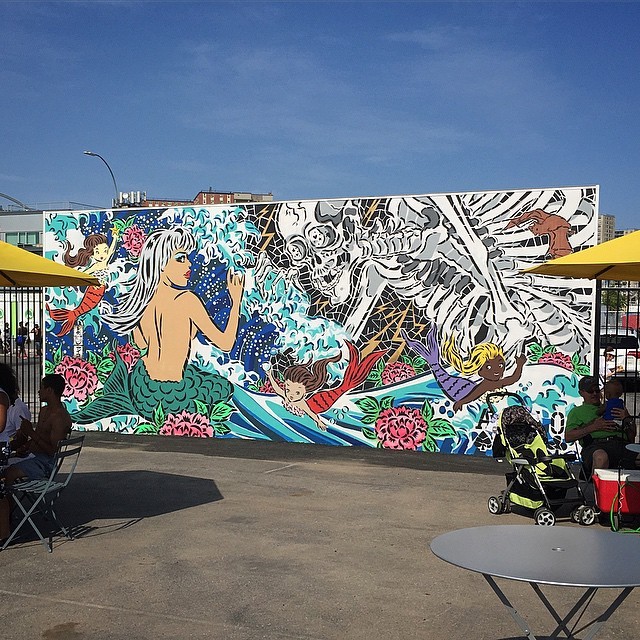
Note: This post is in adaptation of what I presented last month at The Art Conference in London. So if you were curious about that talk, here you go.
As Rafael Schacter has argued, street art has moved “from dissident to decorative.” We’ve gone from politically radical drawings in New York subway stations to decorating music festivals so that attendees are a bit less bored while they sip beer and wait for Kanye to take the stage.
I call that safe public art “wallpaper.” Wallpaper is what you get when you mix street art with plop art, those huge, random, mostly abstract or minimalist sculptures that show up in semi-public squares as a result Percent For Art programs. When a developer is legally required to install some public art in front of their building, they often just go for something big, expensive, and (most importantly) benign. Wallpaper, like plop art before it, reinforces existing power structures.
We live in a world of wallpaper. Mural festivals provide plenty of examples. When I see yet another mural by a globe-trotting artist who does most of their sketching on transcontinental flights, I have to ask, “Is this wallpaper productive?” There’s only so much funding for murals each year. Artists only have so much brainspace to create. Maybe more wallpaper isn’t the best use of our resources. Wallpaper is like sugar. Good in small doses, terrible in large doses, and we tend to overdo it.

Take the Coney Art Walls, a project that I actually do enjoy. In many ways, the Coney Art Walls are a prime example of wallpaper: concrete slabs installed solely for the sake of murals, high-end food trucks that the murals are meant to get you to eat at, a neighborhood that functions as an amusement park, funding from a controversial property developer… But unlike most wallpaper festivals, the Coney Art Walls are well curated, there’s a wide range of artists who are well paid and allowed to take risks, and many of the murals reference the historic neighborhood. Still, if the Coney Art Walls is among the best that the street art festival model can offer, it’s safe to say that festivals and similar mural projects generally do not live up street art’s radical roots.
On a good day, what can street art do, when we think beyond wallpaper? It can transform and empower. It can bring people together. It can propose better versions of public space.
Continue reading “Beyond wallpaper: street art works”
